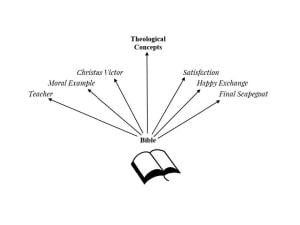How does Jesus save? Part Three
Christus Victor as Victorious Champion and Liberator
ST 2103
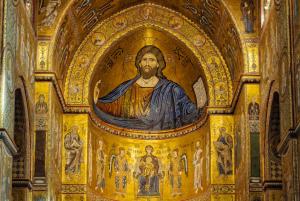
We are asking: how does Jesus save? Here, in Part Three, we will give attention to the Christus Victor model of atonement. The mid twentieth century Lundensian theologian, Gustaf Aulén (1879-1977), wrote a book with this title in 1930 (Aulén 1967). I have a soft spot in my heart for the theologians of Lund University, because that fine institution saw fit to award me a Doctoris Honoris Causa some years ago.
Why are we asking: how does Jesus save? Because theologians–especially evangelicals and progressives–are arguing over Penal Substitution Theory (PST) like red ants and black ants fighting over a horse bun. What we’re doing here is placing PST in the context of six atonement models, all of which are biblical. One model with two sub-motifs or variants, Christus Victor, is worth looking at in some detail.
Christus Victor is perhaps the most dramatic atonement theory on our list. This theory begins with the Easter resurrection as Christ’s victory over sin, death, and the devil. Then, the Christus Victor model proceeds through the ascension to the right hand of God the Father and the reign of Pantocrator. The Victorious Champion motif draws on the Bible’s military and regal imagery. You’ll find Christ as Pantocrator on the ceiling of the next Orthodox church you enter.
Here’s the list we’re working with. Note the two variants: Jesus as victorious champion and Jesus as liberator. [See Video: Models of Atonement]
- Jesus as teacher of true knowledge
- Jesus as moral influence
- Christus Victor
- 3.a. Jesus as victorious champion
- 3.b. Jesus as liberator
- Satisfaction
- 4.a. Recapitulation Theory
- 4.b. Satisfaction Theory
- 4.c. Penal Substitution Theory
- Happy Exchange
- Jesus as the final scapegoat
3.a. Jesus as Victorious Champion
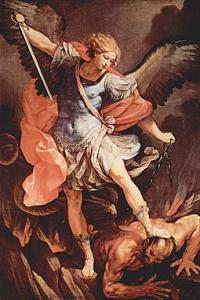
How does Jesus save? Jesus saves us like a knight in shining armor riding a mighty steed into battle against sin, death, and the devil. Jesus’ victory becomes our victory. The worldview of reformer Martin Luther (1483-1546) was replete with military imagery within which Christ championed God’s grace. In Bondage of the Will, Luther tells us,
“There are two kingdoms in the world, which are bitterly opposed to each other. In one of them Satan reigns, who is therefore called by Christ ‘the ruler of this world’ [John 12:31] and by Paul ‘the god of this world’ [2 Cor. 4:4]….In the other kingdom, Christ reigns, and his kingdom ceaselessly resists and makes war on the kingdom of Satan” (Luther, The Bondage of the Will (1525) / The Annotated Luther, 6 Volumes 2016-2019, 2:250).
Luther’s military worldview is reflected in his signature hymn, “A Mighty Fortress” (Ein feste Burg ist unser Gott). Look at the first two stanzas where God is first likened to a mighty fortress and then Jesus Christ to a victorious soldier.
| Ein feste Burg ist unser Gott, ein gute Wehr und Waffen. Er hilft uns frei aus aller Not, die uns jetzt hat betroffen. Der alt böse Feind mit Ernst er’s jetzt meint, groß Macht und viel List sein grausam Rüstung ist, auf Erd ist nicht seins gleichen.Mit unsrer Macht ist nichts getan, wir sind gar bald verloren; es streit’ für uns der rechte Mann, den Gott hat selbst erkoren. Fragst du, wer der ist? Er heißt Jesus Christ, der Herr Zebaoth, und ist kein andrer Gott, das Feld muss er behalten. |
A mighty fortress is our God, A bulwark never failing: Our helper He, amid the flood Of mortal ills prevailing. For still our ancient foe Doth seek to work his woe; His craft and power are great, And armed with cruel hate, On earth is not his equal.Did we in our own strength confide, Our striving would be losing;Were not the right Man on our side, The Man of God’s own choosing. Dost ask who that may be? Christ Jesus, it is he; Lord Sabaoth is his name, From age to age the same, And He must win the battle. |
But, you might complain, the historical Jesus never donned a soldier’s uniform. There is no record of Jesus ever fighting like a knight. And, more importantly, Jesus was categorically nonviolent. So, how dare a theologian suggest that forgiveness of sin is a victory won in battle?
The answer is found in the symbolic language of the Bible. The New Testament is filled with families of metaphors. We’re all familiar with the shepherd and sheep family. Jesus can be described as the lamb of God (John 1:29) or the Good Shepherd (John 10:11-18) or the lamb upon the throne (Revelation 5:13). The sheep and shepherd metaphors roll off the biblical tongue even though our historical Jesus never worked as a shepherd, even part-time on weekends. Nor did he morph into a lamb avatar.
So also with the military metaphors, which run parallel to the shepherd ‘n’ sheep metaphors. Jesus was not literally a warrior. Yet, metaphorically, by rising from the dead on the first Easter he was victorious.
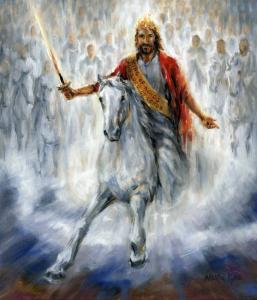
Let’s look at the metaphor family of royal and military imagery. Its most vivid biblical image of the victorious soldier is that of Saint Michael engaged in the great war in heaven with the devil. Michael was able to defeat the dragon and throw the Devil down the to earth (Rev. 12:7-12; Dan. 12:1). Our victorious champion, like a warring knight, comes on a white horse, being called “Faithful and True,” leading a great army by which he will rule the nations. On his thigh, he has a name inscribed, “King of kings and Lord of lords” (Rev. 19:11-16). Who is this Saint Michael? Jesus Christ, of course.

The patristics employed a much less elegant figure for Christus Victor that was picked up by Luther, namely, that of the worm on a hook. The innocent Jesus is the bait that the devil, like a hungry fish, devours. But the devil is supposed to devour only those whose souls have already been given over to evil. By eating the innocent Jesus, the devil has overreached himself and thereby disqualifies himself as the rightful heir to the booty of sin. The divine innocence of the incarnate one was the hook whereby the devil was outsmarted and brought to defeat. The worm on the hook model is a variant on the victorious champion. But, here, God wins through cleverness rather than might.
Inna Jane Ray places the fish-on-a-hook imagery under the Ransom Theory of Atonement. Accordingly, the Devil rightfully claims authority over the fallen human race. God owes the Devil, so to speak. So a ransom must be paid. What actually happens on the cross, though, is that Jesus the bait tricks the Devil. The Devil claims the innocent one, even though he’s due only the guilty ones among us. In short, God tricks the Devil out of receiving his due (Ray, 1997, 22). Our God is a clever God, because God skipped a car payment. Within the Christus Victor model, similarly, the Son of God as worm outsmarted the overly aggressive fish. Hence, he’s our victorious champion. Different set of metaphors. Same atonement message.
Gustaf Aulén on Christus Victor
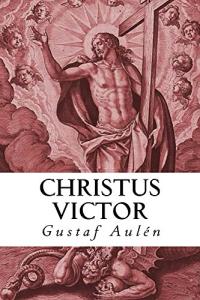 Four centuries after Luther, Gustaf Aulén claimed that Christus Victor as victorious champion is the so-called classic theory. When we ask about the corresponding anthropology, Aulén argues that the fundamental problem of the human condition is enslavement. We human creatures are enslaved to the powers of sin, death, and the devil. God working through Christ does battle with these powers, defeats them, and the spoils of Christ’s victory accrue to our advantage.
Four centuries after Luther, Gustaf Aulén claimed that Christus Victor as victorious champion is the so-called classic theory. When we ask about the corresponding anthropology, Aulén argues that the fundamental problem of the human condition is enslavement. We human creatures are enslaved to the powers of sin, death, and the devil. God working through Christ does battle with these powers, defeats them, and the spoils of Christ’s victory accrue to our advantage.
God is the chief actor in the whole Christus Victor drama. Reconciliation is achieved apart from human contribution. This stands in sharp contrast to the Jesus as true teacher and Jesus as moral influence models, wherein atonement is something we accomplish ourselves under the guidance of Jesus’ teaching or example. The overriding emphasis of Aulén’s Christus Victor motif is that God and God alone accomplishes the victory. Therefore, we can and must think of our salvation as a gift bestowed through grace alone, sola gratia.
3.b. Jesus as our liberator.
Over the last half century, a variant of the Christus Victor motif—Jesus as liberator—has been proffered by liberation theologians. The symbol of the liberator takes its inspiration from such passages as Galatians 5:1, “For freedom Christ has set us free; stand fast, therefore, and do not submit again to a yoke of slavery.”
There is a shift here, however, in the understanding of what binds us and what freedom means. Whereas concomitant with the Christus Victor symbolism, we become liberated from sin, death, and the power of the devil, liberation theologians picture the savior freeing us from political, social, and economic oppression.
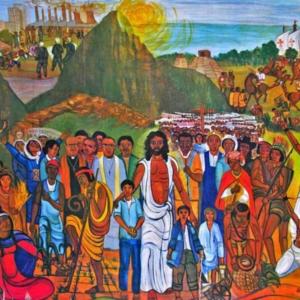
Whereas Saint Paul in Galatians may have thought of the “yoke of slavery” metaphorically, as referring to the law that keeps us in sin, liberation theologians take the idea of slavery as referring metaphorically to economic or political bondage to which the First World subjects the Third World. No one treats slavery literally. What is literal is this: the subaltern in virtually every society needs cultural, economic, and political empowerment.
You and I or our subaltern friends are enslaved by forces beyond our control. What we need is liberation.[1] And liberation is just what Jesus Christ delivers. The paladin of American Black Theology, James Cone, contends that “Jesus presence in the experience of suffering liberated black people from being dependent upon the historical limitation of servitude for a definition of their humanity.”
One of my precocious doctoral students, Mwaambi G Mbûûi, is developing a Drumbeat African Public Theology contextualized for his home country, Kenya. Even though all atonement models have value, he says he’s electing Jesus as Liberator for his soteriology. Why? His Kenyan context will benefit most, he thinks, by liberating within East African culture the pre-colonial belief in Ubuntu. Ubuntu reminds us of the interconnectedness of life, all of life. The liberator sets free what is indigenous from its repression by colonizers. Mbûûi said the following in an exam paper.
“Basically, liberation theologians diligently carry out their mandate as prophetic agents, and heralds of powerful divine visitation. To engage in prophetic theology as they do is to effectively enter into divine partnership, towards the realization of far-reaching freedoms that are marked by the indiscriminate shattering of oppressive shackles, whether spiritual, socioeconomic, political, and cultural.”

Some people of color and the subaltern are reluctant to adopt the Christus Victor model in its traditional form of the victorious champion. Why? Because they question the desirability of the warrior imagery in hymns with lines such as “onward Christian soldiers, marching as to war” or “stand up, stand up for Jesus, ye soldiers of the cross.”
The problem with the military metaphors, contend liberation theologians, is that average Christians may identify too closely with the victory of their champion: “Be we Christ’s, in him forever we have triumphed overall.” Historically, Christian crusaders actually marched to war under the banner Christus est Dominus, Christ is Lord. Thus, the military and triumphal imagery comes under suspicion here. Although its avowed reference is to the victory of Christ over sin and in our behalf, the rhetoric of victory can too easily be used to support the coercive conquest of pagan nations by Christian civilization.
Among our liberation theologians, hermeneuts of suspicion seem unconcerned about worms on hooks. But, they do worry that military metaphors may risk contributing to oppression rather than liberating us from oppression.
Christus Victor in Liberation Theology? Jesus as Liberator
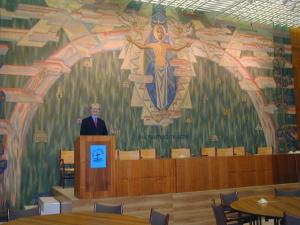
Thinking of Jesus as liberator is better than considering Jesus as victorious champion, say some liberation advocates. The argument is subtle. Whereas “victory” would have as its object the enemy that has been conquered, “liberation” refers us to those set free. Victory implies someone is defeated, whereas liberation can apply to all. Both those oppressed and their oppressors benefit from liberation of the oppressed.
“Liberation in solidarity leaves out no human being,” says Ignacio Ellacuria (Ellacuria 2014, 36). It appears that Jesus as victorious champion and Jesus as liberator share the same deep structure, although the symbols are lifted up and interpreted in slightly different directions.[2]
Yet, there is another significant difference that is worth noting. We can get at this difference by asking: Just how does the liberation take place? Whereas Aulén emphasizes that the Christus Victor motif requires that we understand the work of salvation as solely God’s work, liberation theologians add the motif of moral example and influence. According to Spanish Jesuit Jon Sobrino, for example, the historical Jesus favored the poor against their rich oppressors. We should follow Jesus in this regard and carry on the work of liberation (Sobrino 1978).
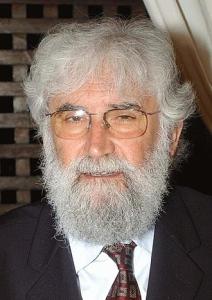
Similarly, Franciscan Leonardo Boff in Brazil sees Jesus as liberator because he taught “loving all as sisters and brothers,” which includes liberating the human person “in body, soul, and all secular dimensions as well.” Boff believes Jesus actualized this potential for freedom that lies in every human being, and so Jesus calls us into the freedom of becoming our true selves (Boff 1984). The act of liberation reflects the trinitarian life of God, according to Boff, wherein the three persons exist in equal relations without domination or oppression. Father, Son, and Holy Spirit “is to be for others, through the others, with the others and in the others”(Boff, 1988,9).
Argentinian J. Severino Croatto (1930-2004) argues for a revolutionary form of Christianity on the grounds that Jesus Christ “has proclaimed the values of justice and freedom that are the basis of socio-political liberation movements.” Jesus is more than an example. Through his teachings he is also an influence that goads us into pursuing the task of social transformation. And, because of this influence we can think of him as our liberator (Croatto 1984). The result, perhaps, is a merging of moral-influence and Christus Victor models in liberation theology.
Incarnation as Liberation

Systematic theologian Kathryn Tanner embraces the Christus Victor model, but without the military imagery. Rather, she treats the entire incarnation of God in Jesus Christ as the triumph. “The cross saves, not as a vicarious punishment or an atoning sacrifice or satisfaction of God’s honor or as a perfectly obedient act—all those accounts of the cross that have become problematic for contemporary persons, especially since the lessons of white feminist, womanist, and liberation theology. The cross saves because in it sin and death have been assumed by the one, the Word, who cannot be conquered by them. Christ is victor here, following Gustaf Aulén’s famous typology, but the underlying model is that of the incarnation itself” (Tanner 2001, 29).
What’s Next?
How does Jesus save? Jesus Christ rescues us from forces that overwhelm us such as sin, death, and the power of the devil. “God just forgives us for free,” touts Frederica Mathews Green. “We’ve made ourselves captives of the evil one…We had to have Christ go into the realm of death to set us free. That’s why we love the cross. That’s why we love the resurrection.”
As we see, there are many ways to answer the question, how does Jesus save? In the next post, we will examine the Orthodox Recapitulation Theory plus Saint Anselm’s Satisfaction Theory of Atonement. Anselm’s medieval satisfaction model prepared the way for the Reformation Penal Substitution Theory or PST. It is PST that has sparked today’s theological mayhem in Calvinistic circles.
▓

Ted Peters is a Lutheran pastor and emeritus seminary professor, teaching theology and ethics. He is author of Short Prayers and The Cosmic Self. His one volume systematic theology is now in its 3rd edition, God—The World’s Future (Fortress 2015). His book, God in Cosmic History, traces the rise of the Axial religions 2500 years ago. He has undertaken a thorough examination of the sin-and-grace dialectic in two works, Sin: Radical Evil in Soul and Society (Eerdmans 1994) and Sin Boldly! (Fortress 2015). Watch for his forthcoming, The Voice of Christian Public Theology (ATF 2022). See his website: TedsTimelyTake.com.
Ted Peters’ fictional series of espionage thrillers features Leona Foxx, a hybrid woman who is both a spy and a parish pastor.
▓
[1] Who belongs to the subaltern? Anyone within a larger society who is marginalized. The postcolonial liberation theologian’s concern for subaltern peoples constitutes an authentic expression of Jesus’ love for the disenfranchised and the theologian’s preferential option for the poor. [2] The Lutheran Theology of the Cross, says Brazilian Vitor Westhelle, “is a way of recognizing the other and hidden side of history, the margins, the excluded, the stranded ones, the crucified people (I. Ellacuría), the nonpersons (G. Gutiérrez), as the privileged space of God’s self-revelation” (Westhelle 2022, 87)Bibliography
Abelard, Peter. 2007. “Peter Abelard on the Love of Christ in Redemption.” In The Christian Theology Reader, by ed Alister McGrath, 358-359. Malden MA: Blackwell.
Althaus, Paul. 1966. The Theology of Martin Luther. Minneapolis MN: Fortress.
Aulén, Gustaf. 1967. Christus Victor. New York: Macmillan.
Boff, Leonardo. 1984. “Images of Jesus in Brazilian Liberal Christianity.” In Faces of Jesus: Latin American Christologies, by Jose Miguez Bonino, 19-21. Maryknoll NY: Orbis.
____. 1988. Trinity and Society. London: Burnes and Oates. Calvin, John. 1535. Institutes of the Christian Religion . Tr. Thomas Norton: https://www.ccel.org/ccel/calvin/institutes.toc.html.
Cone, James. 1975. God of the Oppressed. New York: Seabury. Croatto, Severino. 1984. “The Political Dimension of Christ the Liberator.” In Faces of Jesus: Latin American Christologies, by ed Jose Miguez Bonino, 96. Maryknoll NY: Orbis.
Ellacuria, Ignacio. 2014. “Utopia and Propheticism.” In A Grammar of Justice: The Legacy of Ignaxio Ellacuria, by eds Matthew Ashley and Kevin Burke, 7-56. Maryknoll NY: Orbis.
Girard, René. 1978. Things Hidden Since the Foundation of the World. Stanford CA: Stanford University Press.
Hultgren, Arland. 1987. Christ and His Benefits: Christology and Redemption in the New Testament. Minneapolis MN: Fortress.
Kant, Immanuel. 1960. Religion within the Limits of Reason Alone. New York: Harper.
Luther, Martin. 1955-1986. LW. Luther’s Works, American Edition, 55 Volumes: St. Louis and Minneapolis: Concordia and Fortress.
—. 2016-2019. The Bondage of the Will (1525) / The Annotated Luther, 6 Volumes. Minneapolis MN: Fortress Press.
Peters, Ted. 2015. God–The World’s Future: Systematic Theology for a New Era. 3rd. Minneapolis MN: Fortress Press.
Ray, Inna Jane, 1997. “The Atonement Muddle.” Journal of Women and Religion, 15. Sobrino, John. 1978. Christology at the Crossroads. Maryknoll NY: Orbis.
Tanner, Kathryn. 2001. Jesus, Humanity, and the Trinity. Minneapolis MN: Fortress.
Westhelle, Vitor, 2022. “Ucis Crucis: The Use and Abuse of the Cross and the Practice
of Resurrection.” Encountering Luther. Eds., Kirsi Stjerna and Brooks Shramm.
Louisville KY: Westminster John Knox.


